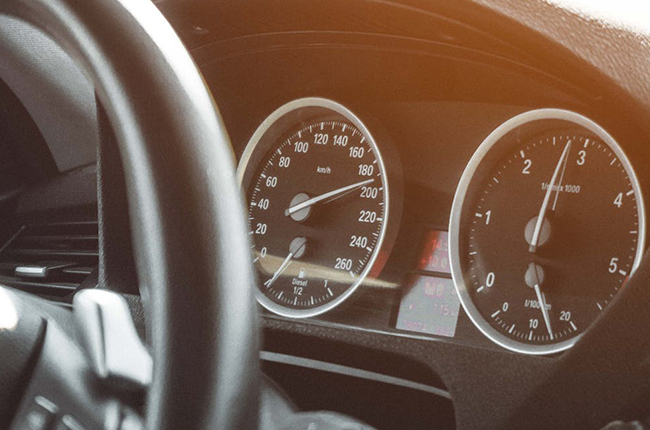
CVTs have been getting a bad rep lately, but that doesn’t make it a bad transmission. Manufacturers have to play a game of cat and mouse in order to meet the expectations of consumers and improve their automobiles. In a bid to make cars more fuel efficient and theoretically faster, they put two pulleys and a belt together to make this often hated transmission accelerate faster, and respond better – theoretically of course.
We do say theoretically because majority of drivers are used to having hard gears in their transmissions. A progressive transmission with infinite ratios is an alien concept for now, since some people aren’t familiar with what a CVT actually is, and when they do get to drive in a car with such a transmission, they find it weird because the car does not behave as they expect.
A CVT doesn’t actually have to be a dealbreaker. If the driver is willing to learn to utilize this transmission in the right way, then there are loads of benefits that await. Increased fuel economy and efficient acceleration are the main draws of a CVT, but in order to make the most out of the transmission, a few considerations and practices must be followed.
Set expectations

So the car is not a traditional automatic or a manual transmission anymore, don’t expect it to behave as such. We do know that there are cars, such as the Honda Civic RS Turbo, with a CVT and paddle shifters. When accelerating, the transmission tends to mimic the behavior of a geared transmission. When going at full tilt you may notice the tachometer needle bouncing up and down the rev range. You can also lock the gear ratio to engage in some engine brake to slow you down while descending from an incline.
This is a classic case of manufacturers trying to meet the demands of car buyers who are used to traditional acceleration patterns in a car, but most CVTs are programmed to let the engine sit at an optimal rpm for the best acceleration given the throttle input.
Progressive throttle input

So the first actual tip that we have for you is to apply your throttle progressively. The transmission is sensitive to small adjustments in the level of your throttle input. Since the transmission is progressive in its nature, throttle input must be done progressively as well.
The transmission can jerk when taps are made abruptly. This puts a little more stress on the transmission, which may cause some damage in a worst-case-scenario, otherwise the jerks are annoying. When you accelerate out of a stop, try to step on the gas slowly, so the car smoothly goes up to speed.
Light foot

Don’t beat down on the accelerator too much, and don’t stab it every chance you get. Keep it smooth and steady when accelerating. Don’t step and release, but just smoothly glide down into the lower levels of the accelerator, and you might not feel it, but you will go faster even with some input on the accelerator pedal.
Also keep in mind that the transmission will do the work for you. The CVT will change ratios for you, which means that your engine will not need to rev up all the way to redline and back down again to drive the gears. In this instance the CVT is helping the engine keeps its rpms low and the vehicle’s fuel economy high.
Patience

In line with the first piece of advice, be patient. It takes time to get used to a new kind of transmission. While having simulated gears are a good thing for those looking to transition, the best programming – theoretically is the one where the engine stays at a certain RPM while the car keeps accelerating.
So keep an open mind. While there are other transmissions the CVT has room for improvement and could take over the passenger car industry. Common cars are already sporting the transmission, and its only limitation is maintenance and longevity. History is not friendly for CVTs, and we have to see whether this new generation will hold up in the long run. With these tips however, you can preserve or even enjoy your transmission the way it is on whatever car it is in.
Latest Features
-
An all-electric future: The Porsche Macan Electric / Featured Article
Porsche’s Macan goes all-electric; it’s a new beast with an electrified heart, yet unmistakably Porsche in performance and spirit.
-
Which Kia should I buy? / Featured Article
We’re here to help you decide which Kia vehicle is best for you, whether it’s a sedan, crossover, or minivan.
-
Why Lynk & Co is a good option for luxury car buyers / Featured Article
Lynk & Co offers premium value for those exploring the luxury market.
Popular Articles
-
Electric Vehicles in the Philippines for under P1 million
Jerome Tresvalles · Aug 19, 2025
-
Top 3 Cars For Every Lifestyle—What Cars Are Right For You? | Behind a Desk
Caco Tirona · Apr 24, 2024
-
5 Tips to Maximize Fuel Efficiency
Jerome Tresvalles · Sep 09, 2024
-
Five driving habits that are draining your fuel tank
Jerome Tresvalles · Jun 24, 2025
-
Can engine braking harm your engine?
Jerome Tresvalles · Sep 11, 2025
-
Do electric cars even need maintenance?
Jerome Tresvalles · Oct 23, 2024
-
Best vehicles for an active outdoor lifestyle
Shaynah Miranda · Jul 25, 2024
-
How to drive different types of vehicle transmissions
May 23, 2024
-
5 easy ways to keep your car interior clean
Allysa Mae Zulueta · Nov 15, 2021
-
How to survive Metro Manila traffic
Earl Lee · Aug 16, 2022




